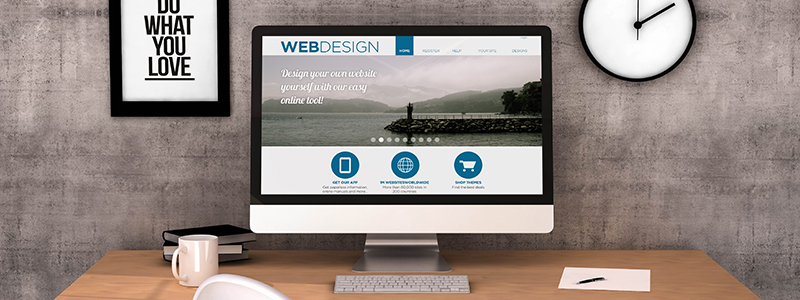
Do you want to know how much a website costs in the UK? Well, let’s take a look.
This is one of the most frequently asked questions in the field of web design, but the solution isn’t as straightforward as it appears.
There are two factors that make answering this question difficult:
1. Websites are not just one job. Every site is different, therefore they require different types of work to be done and it’s often hard to tell which kind of website you’re getting for your money;
2. Prices vary significantly among web design companies because there is no standard price tag for websites. Each company sets its own prices depending on how it sees itself in the market.
What do you get for your money?
Websites are not just one job. Every site is different, therefore they require different types of work to be done and it’s often hard to tell which kind of website you’re getting for your money. A simple website with a blog is going to be a lot cheaper than a fully-featured ecommerce store with a range of complex features, so it’s really hard to say without knowing what the site is going to be like.
There are general steps in building any website:
- Planning and research;
- Designing and wireframing;
- Development (coding the website);
- Content creation (writing blog posts, taking photos etc.);
- Testing and bug fixing;
- Deployment to a web server using a control panel or FTP client;
- Submission to search engines and adding social media integration via plugins;
- Training in how to use it for your team if necessary.
You can expect to pay for each of these steps, although the amount you will have to fork out varies depending on the nature of your site. This step-by-step guide will help you choose what kind of website you want and what you should be expecting to pay.
Step 1: Know the type of website you need

The first step in finding out how much your website will cost is knowing what kind of site you need. There are many website types, but the following 3 categories account for over 90% of all websites:
Blogs
Blogs are personal or company journals that include comment fields. They usually have non-interactive content and their main goal is to provide an insight into the thoughts of the blog owners. They are cheap because they do not store data or sell products, so their main expenses revolve around hosting and site maintenance.
Simple, business website
A basic website is sufficient if your company only offers a few services or products that you do not wish to sell online. The site will serve as an internet business card, attracting people to look at your services and learn more about your company. This style of website is particularly well suited for small neighborhood enterprises.
Ecommerce site
If your company manages a number of products and you wish to sell them online, an ecommerce store is the best option. Online stores increase revenue by making it possible to reach out to customers all over the world with minimal overhead costs. They often need payment integration, product export capabilities, shipping calculation tools and secure transaction management, all of which cost extra.
Step 2: Understand the services you need

Once you know what type of site you need, it’s time to start thinking about the actual services your site requires. Here are some examples of common website features and associated costs:
1. Email: A website email address is included with most web hosting packages but you will need to pay extra for advanced features such as mailing lists and third-party integration with desktop clients.
2. Blogging/news section: Some companies have a blog on their site, while some just use the news section as another way of getting out information. If you need a blog, the price per page is about $10-$30 per month depending on the size of your company and where you host it.
3. CMS/blogging engine: A content management system (CMS) simplifies information management for companies that have a large number of pages or a complex site structure. You can opt for a simple blogging engine if you are not worried about advanced features. These are all included with web hosting packages but there are usually separate charges for custom web design work.
4. Shopping cart: If you’re selling goods online you should consider paying extra for a shopping cart solution.
5. Domain name: This is the text that appears in your web address (www.[BusinessName].com). You usually get one free domain with your hosting package but you must pay if you need more than one.
6. SSL certificate: A secure socket layer (SSL) certificate is used to protect online transactions. This is available from most hosting companies for around $50 per year, but prices are typically higher if you have a large transaction volume or want an advanced SSL feature.
7. Site migration: Do not skip this step! Changing web hosts can be difficult and time-consuming, and mistakes can lead to data loss.
8. Software updates: Your web hosting company should update any software on your site as needed (e.g. to maintain compatibility with the latest browsers). Most charge a fee for this service.
Step 3: Choosing a template or custom development

If you already have a basic website design in mind, it’s time to find out how much the actual implementation will cost. If your site is simple, purchasing a template can be cheaper than custom web design because there are no ongoing maintenance costs or consultancy expenses involved with using a plug-and-play solution (e.g. WordPress).
If you do not have a website design in mind, you can opt for a custom web design. This is more expensive because it requires an initial consultation to discuss your requirements. The type of business and level of service that the site provides will determine the cost.
Step 4: Copywriting and SEO service

Your website content needs to be well-written and informative. Consider hiring a copywriter if you do not have the time or skills to write this type of material yourself. Search engine optimization (SEO) is also needed for most businesses, especially those that sell goods online. A web design company in UK can help you with this (e.g. via content and link building), or you can do it yourself using SEO software like Moz Pro and Screaming Frog .
Step 5: Ongoing maintenance
Your web provider might offer some maintenance services as part of your package, but this usually covers basic tasks like checking site security and applying software updates. If you want more thorough IT support or someone on-hand to deal with more complex issues, you should consider hiring a website administrator. This role is included in the overall cost of most web design companies, but could be an extra cost if you want to hire someone for this work full-time.
A web design company will include the cost of ongoing site maintenance in their overall quote, so make sure you check what’s included before signing any agreements.
Final website design cost
Now you know what to think about in order to calculate the cash expenditure of your website design project. Finally, here is a very rough estimate of the overall cost for each type of site:
- Blog: $500 – $2,000
- Bespoke ecommerce site: $4,000 – $10,000
- Business website: $1,500 – $4,000
- Shopping cart: No separate cost
- Custom feature-rich site: $10,000 or above (plus ongoing maintenance)
A website design in UK would cost around $3,000 to build depending on the features of the site you choose. However, complete costs vary for different business types.